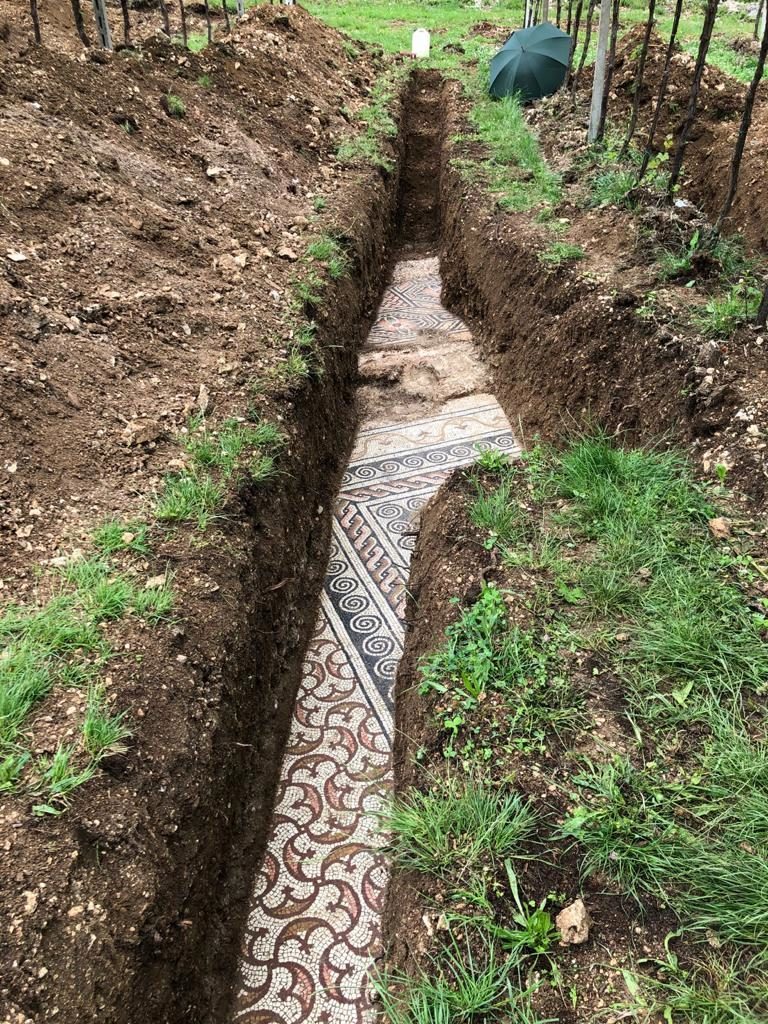[ad_1]
Archeologists have unearthed a well-preserved ancient mosaic floor under a vineyard near the Italian city of Verona, nearly 100 years after its last excavation attempt. Until now, that site had largely been forgotten. According to surveyors in the commune of Negrar di Valpolicella north of Verona, the discovery was made “after decades of failed attempts.”
Last summer, a team of state-funded archeologists, equipped with century old photographs of the site and an approximate knowledge of its location, began the search anew. They dug narrow trenches to accommodate the knobby terrain and thick vines, careful not to disturb the vineyard or damage the mosaic. After a brief break due to the coronavirus pandemic, they struck gold on May 18, in what Gianni de Zuccato, the project’s head archaeologist, described to the New York Times as “one of the most moving experiences of my life,” adding, “I had the sensation of entering a time machine, of coming into contact with reality that’s long gone, so many centuries ago, and yet having the imprint of humankind.”
Zuccato and his team still have much work ahead, however. The layout of the villa will have to be mapped out; early estimates suggest that it may have measured 10,000 square feet. Images of the excavation site posted to Facebook reveal the mosaic floor, which experts have dated to the 3rd or 4th century A.D. Its intricate red, green, and black tiling are clearly visible.
The mayor of Negrar di Valpolicella told the Italian outlet L’Arena that “we believe a cultural site of this value deserves attention and should be enhanced,” adding that the mosaic is “an archaeological treasure.”
[ad_2]
Source link

